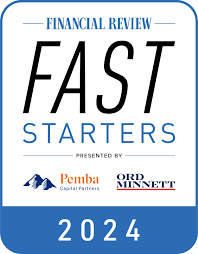Unraveling the Artificial Intelligence (AI) Spectrum: Diverse Tools for a Digital Age
The landscape of Artificial Intelligence (AI) tools is vast, offering myriad solutions tailored for specific applications. Let's delve deeper into some revolutionary tools that are shaping our technological present and future.
Natural language processing (NLP) platforms
Natural language processing (NLP) platforms are becoming increasingly popular and are changing the way people interact with computers.
- They use various techniques such as machine learning, deep learning, and neural networks to analyse and understand human language.
- NLP platforms can be used for a variety of tasks, such as language translation, text generation, sentiment analysis, and language comprehension.
- They are used in industries such as healthcare, finance, and customer service to improve communication and enhance customer experience.
The ever-evolving technology behind NLP is refining its precision, positioning it as an indispensable asset for modern enterprises.
Computer vision tools
Computer vision platforms are another example of AI tools that are changing the way people interact with technology.
- These tools are designed to analyse and understand visual data such as images and video.
- They can be used for tasks such as object recognition, facial recognition, and image classification.
- Computer vision platforms are being used in a variety of industries, such as healthcare, retail, and manufacturing. For example, in healthcare, computer vision tools are being used to analyse medical images and diagnose diseases, while in retail, they are being used to track customer behaviour and improve store layout.
The increasing accuracy of computer vision tools promises to be a game-changer in harnessing visual data's true potential.
Machine learning tools
Machine learning tools are another AI tool that is changing the way people work.
- These tools are designed to learn and improve over time by analysing data and making predictions or decisions based on that data.
- Machine learning tools can be used for tasks such as predictive analytics, data classification, and anomaly detection.
- They are being used in industries such as finance, healthcare, and marketing to improve decision-making and automate tasks. For example, in finance, machine learning tools are being used to detect fraud, while in healthcare, they are being used to analyse patient data and predict disease outcomes.
With every iteration, machine learning tools inch closer to human-like analytical proficiency, democratising sophisticated data analysis for businesses of all scales.
Robotics platforms
Robotics platforms are another example of AI tools that are changing the way people work.
- These platforms are designed to control and operate robots, enabling them to perform tasks such as manufacturing, assembly, and transportation.
- Robotics platforms are being used in industries such as manufacturing, healthcare, and logistics to improve efficiency and reduce costs. For example, in manufacturing, robotics platforms are being used to automate tasks such as welding and painting, while in healthcare, they are being used to assist in surgery.
From the precision of robotic surgeries in healthcare to automation in manufacturing, these platforms are streamlining processes and ushering in an era of enhanced productivity.
Speech recognition tools
Speech recognition platforms are another example of AI tools that are changing the way people interact with technology.
- These tools are designed to analyse and understand spoken language, enabling computers to perform tasks such as voice-enabled search, voice-to-text transcription, and language translation.
- Speech recognition platforms are being used in industries such as customer service, entertainment, and education to improve communication and enhance customer experience. For example, in customer service, speech recognition tools are being used to automate tasks such as answering calls, while in education, they are being used to transcribe lectures.
As technology advances, speech recognition tools are becoming more accurate and sophisticated, making them a valuable tool for businesses and individuals alike.
Virtual assistants
Virtual assistants have become an integral part of our daily lives, with popular examples including Apple's Siri, Amazon's Alexa, and Google Assistant.
- These AI tools use natural language processing and machine learning to understand and respond to voice commands, enabling users to perform tasks such as setting reminders, making phone calls, and playing music.
- Other virtual assistant tools include IBM Watson Assistant, which can be used to build chatbots and voice assistants for businesses, and SAP Conversational AI, which provides a range of tools for creating conversational interfaces.
The expanse of AI tools available is a testament to the technology's transformative power. From understanding languages, visual cues, or spoken words to making data-driven decisions and physical operations, AI's potential is boundless. As we stand on the cusp of an AI-driven era, it's pivotal for businesses and individuals alike to harness these tools, unlocking opportunities previously deemed impossible.





























